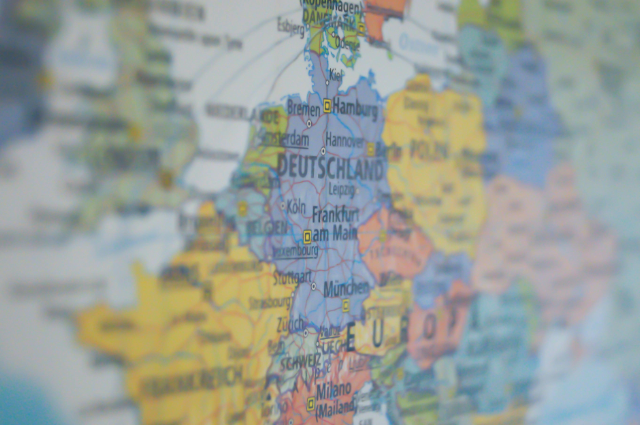
Electoral geography is an exciting field within the interface between geography, political science, and sociology. It checks how spatial factors -physical landscape, ethnic enclaves, urban and rural divisions, and even infrastructure -form patterns and democratic partnerships. Since democracy has spread all over the world, spatial dimensions have not only played an important role in determining “who votes”, but “how they vote” and “what their voices mean” in regional, national, or global contexts. For example, in Russia, the “red belt” refers historically to the cleaved areas that support the Communist Party, while Moscow and St. Petersburg show much more support for liberal parties. The spatial cracks that appear on the election maps highlight the division between north and south, urban and rural, or even ethnic boundaries, and reveal the underlying political identity mentioned in the landscape.
The spatial models to vote, such as the Hoteling-Down model, conceptualize both voters and candidates, such as capturing points in an abstract “released room”. This place is not only ideological, but may include age, ethnicity, social status, or even economic preferences, such as variables. Voters choose the candidates Closest to their own “Ideal Points”. The real verification of these models through large-scale election data reveals their strength in predicting general election results, especially in the case of ranking or multi-divided references such as German or French choices. Mapping these points shows how the real physical or demographic distance becomes political distance through voting. In states with uneven economic development, poor constituents often match redistributed policies, and are shown in mapped election results. For example, in Brazil, the presidential election in 2014 revealed how the government’s welfare policy, like Bolsa Familia, impressed the poor in the countryside to support the Labor Party (PT), even the general “friends and neighbors” voting patterns (where local candidates attract more votes at home). Thus, technical election mapping using regression analysis shows the gap of local identity in the design of geography, political effects, and results that may not be easily comprehended from maps alone.
Electoral geography thrives with maps to use spatial views to add physical, demographic, and economic scenarios. The prestigious “Red vs. Blue” election maps in the United States reflect cultural, regional, and ideological divisions. Spatial analysis highlights not only the difference between the state or district level, but also sometimes under the block or voting stalls. Still, these maps will sometimes mislead: While large rural areas can overshadow the support of the individual party (due to the size of the area), the actual concentration of voices rests with a focused urban population, whose small areas can increase more real voting power. Thus, election geographers look at both population and region to understand power structures. Metropolitan City is a common and fragmented voice pattern, rich in ethnic, commercial, and cultural diversity. It is the opposite in rural areas, where voters often cast a focused vote for special parties or candidates. In countries such as the United Kingdom, the regional political identity in Scotland, Wales, or London is quickly reflected in voting patterns and plays a role in debates on local autonomy and devolution. In the Czech Republic, the longitudinal survey of social democrats from 2006 to 2017 highlighted urban shrinkage and benefits in the countryside, and monitors socio-economic infections over time.
The technical sophistication of electoral geography has increased with the digital age. The campaign is exemplary in micro-corrugations, where parties use spatial data analysis for the messages below for the neighborhood, maximizing voter participation and swinging warmly into the “Battleground” districts. The mal reporting, as seen with the American Electoral College, lets a candidate win despite losing the popular vote, “increases the importance of more votes than' how many votes' “. Relationships, reconciliation, representation, or debate on one-member districts are thus based on the Geographical Principle in the Study. The Study of the Study.
The spatial vote is not just technical or abstract – it is intensified individuals, associated with local history and identity. For example, “friend and neighbor” effects documented worldwide show that voters often favor a well-known, locally drawn candidate. Nevertheless, this effect can be disturbed by eliminating economic realities, new social welfare policies, or urbanization. In Finland, the rural “friend and neighbor” voting is pronounced, but in metropolitan areas, it stands out, providing a way for sharing the big city’s election patterns. Some regions quickly adopt an infection against democratic norms based on historical, spatial, or infrastructural benefits. Longitudinal studies that use “Democracy cubes” allow not only the presence of democracy, but also its breadth and depth of space and timely participation. Since the extensive franchise and the degree of higher participation are spreading, the spatial distribution of governance is also diverse, which reflects both uneven democratization and the constant meaning of the site.
The area of electoral geography emphasizes the fact that democracy, participation, and representation are naturally spatial. Spacious differences, local connections, and infrastructural realities all interacted to shape political consequences. Large data and machine learning limit the spatial analysis, a hundred-year-old dictatorship “all politics is local” -on -news, accurate, relevance, and global resonance. By mapping the geography of the election, society gains a deep understanding of both its divisions and their ability to unite.
References
